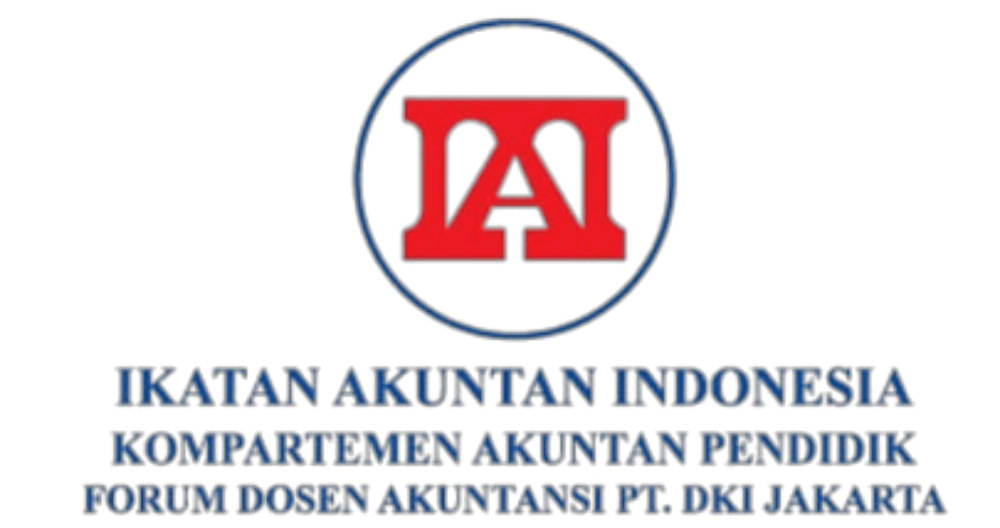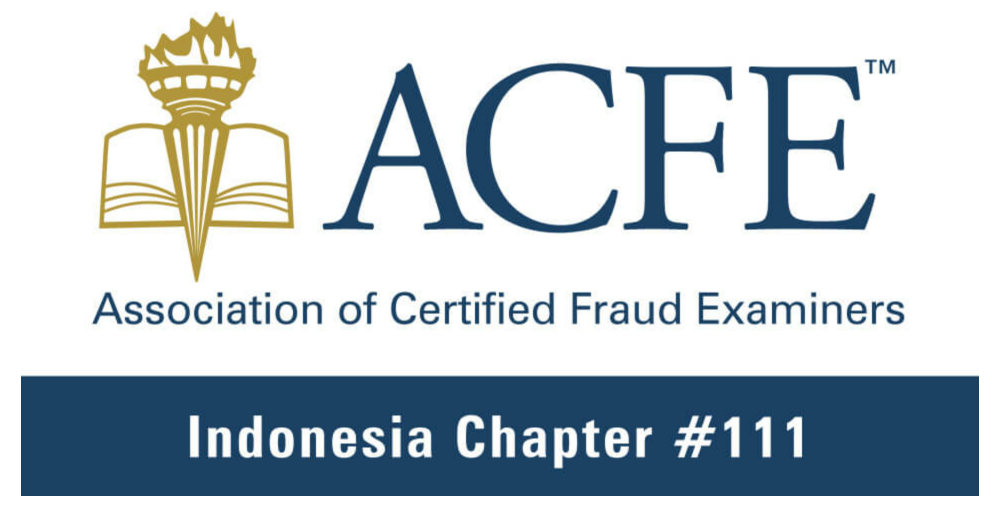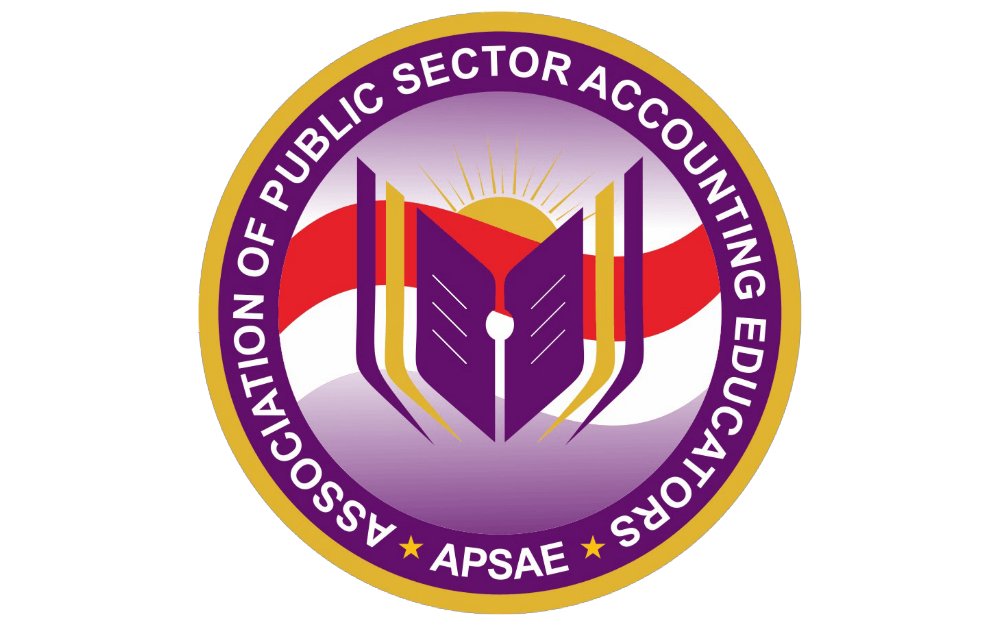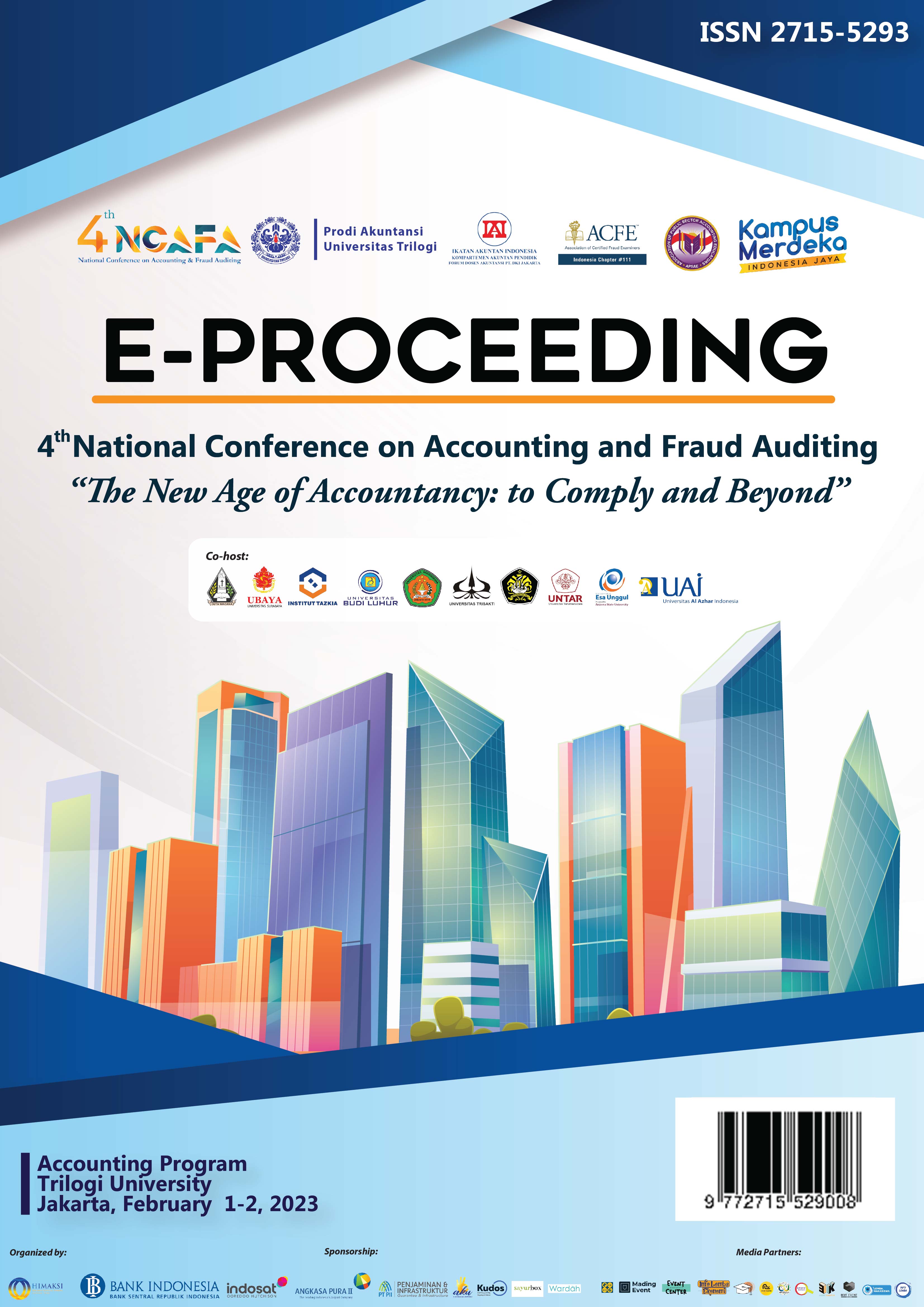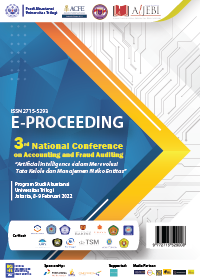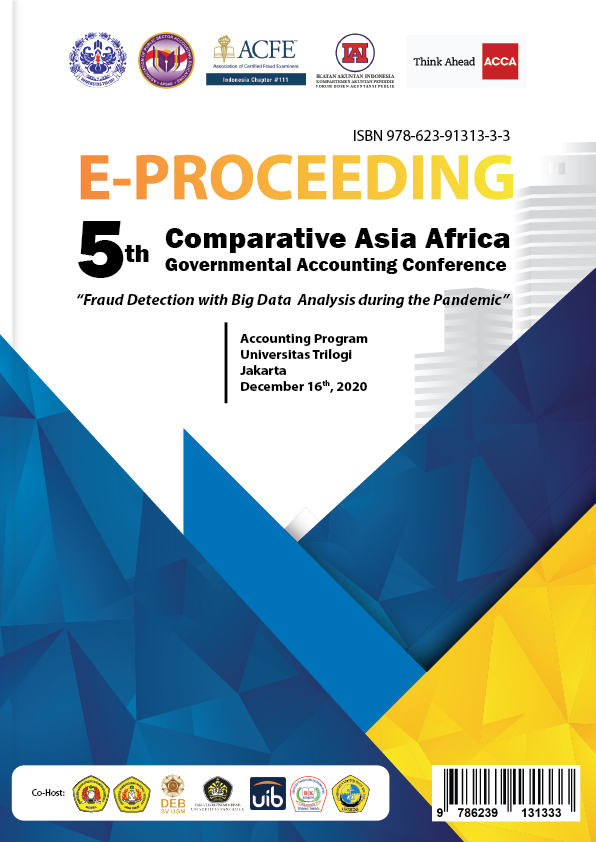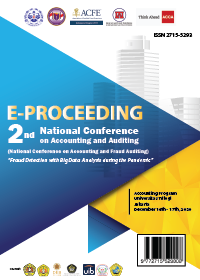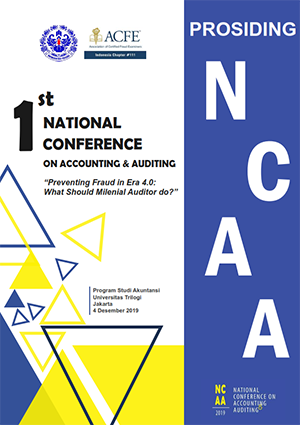IMPLEMENTASI METODE TIME-DRIVEN ACTIVITY-BASED COSTING (TDABC) PADA PT EKA BOGA INTI
Abstract
This research aims to implement the Time-Driven Activity-Based Costing (TDABC) method at PT Eka Boga Inti to provide a reference to the company regarding the effectiveness and accuracy in calculating the time, resource capacity, and costs required of each activity in the grocery distribution process. This research can contribute to helping companies obtain more accurate and transparent cost information related to activities in the grocery distribution process from the central factory to HokBen branches. This research is a type of qualitative research with data collection techniques through observation, and interviews. Furthermore, activity analysis and data analysis are carried out on the data obtained from researchers. Based on the results of the interview, PT Eka Boga Inti uses the Plan, Do, Check, Action (PDCA) method and TMS evaluation to measure the food ingredient distribution process. The PDCA method has several shortcomings including difficulty in measuring effectiveness and this method does not specifically take into account costs. The results of this study present the cost calculation in the food distribution process carried out by PT Eka Boga Inti using the Time-Driven Activity-Based Costing (TDABC) method.
Keywords: Distribution Process, Time-Driven Activity-Based Costing, Cost RateFull Text:
PDFReferences
Abdallah M. Elshaer. (2020, December 01). Analysis of Restaurants’ Operations Using
TimeDriven Activity-based Costing (TDABC): Case Study. Journal of Quality, Volume 23, 2022(Issue 1), 1 sd 25. https://doi.org/10.1080/1528008X.2020.1848745
Kaplan, R. S., & Anderson, S. R. (2004). Time driven activity-based costing. Harvard
Business Review.
Kaplan, R. S., & Anderson, S. R. (2013). Time driven activity-based costing: A simpler and
more powerful path to higher profits. Harvard Business Publishing.
Kaplan, R. S., & Anderson, S. R. (2007). Penentuan biaya berbasis aktivitas berdasarkan
waktu. Harvard Business School Press.
Moleong, Lexy J. (2017). Metode Penelitian Kualitatif, cetakan ke-36. Bandung: PT.
Remaja Rosdakarya Offset
Hansen, Don R., dan Mowen, Maryanne M. 2006. Managerial Accounting, 8th Edition.
Ohio: Cengage Learning
Radhila. A, Implementasi Warehouse Management Menggunakan Metode PDCA,
(Malang:Jurnal Valtech, 1(1)), 230-216
Terungwa, A. (2012, Mei). Kepraktisan penetapan biaya berbasis aktivitas berdasarkan
waktu terhadap profitabilitas restoran di Kota Metropolitan Makurdi, Negara Bagian Benue, Nigeria. Jurnal Manajemen Kontemporer , 33-44. 1929-0128-2012-02-33-12
Andriana, Y. F., Ramayanti, R., & Rachmawati, N. A. (2023). Processing Purple Sweet Potato Peel as Alternative Material of Textile and Fashion Products with Circular Economic Principles. Mudra Jurnal Seni Budaya, 38(3), 277–285. https://doi.org/10.31091/MUDRA.V38I3.2020
Diversity of Book-Tax Conformity in Asean 4: Philippines, Indonesia, Malaysia, and Singapore | Febrina | Jurnal Akuntansi dan Bisnis. (n.d.). Retrieved March 21, 2024, from https://jab.fe.uns.ac.id/index.php/jab/article/view/976/0
EFFECT OF ESG DISCLOSURE, ACCRUAL QUALITY, AND ASYMMETRIC INFORMATION ON FUTURE STOCK RETURNS WITH PRUDENCE AS A MODERATOR. (2023). Journal of Southwest Jiaotong University, 58(5). https://doi.org/10.35741/ISSN.0258-2724.58.5.38
Hanifa, K. U., & Atmini, S. (2023). THE ROLE OF SOCIAL INVESTING EFFICACY IN MEDIATING THE EFFECT OF INDIVIDUAL VALUES ON ETHICAL INVESTMENT DECISIONS. Jurnal Akuntansi Dan Keuangan Indonesia, 20(1), 1–24. https://doi.org/10.21002/jaki.2023.01
Kheira, N., & Opti, S. (2024). The Influence of Herding Bias, Mental Accounting, and Loss Aversion on Investment Decision Making in Users Bibit Application. Adpebi Science Series , 1(1), 1–15. https://doi.org/10.54099/ASS.V1I1.379
Maulidian, M., Puspitawati, M. D., Novita, N., Ramayanti, R., Dahlia, L., & Purnengsih, I. (2024). Green Entrepreneurship Incubation Model for Students at Trilogy University Business Incubator: A Literature Review. E3S Web of Conferences, 483, 01017. https://doi.org/10.1051/E3SCONF/202448301017
Rachmawati, N. A., Gani, L., & Rossieta, H. (2017). LOYALITAS NASABAH DAN KINERJA PERBANKAN DI INDONESIA. Jurnal Keuangan Dan Perbankan, 21(1), 144–156. https://doi.org/10.26905/JKDP.V21I1.1235
Rachmawati, N. A., & Martani, D. (2014). PENGARUH LARGE POSITIVE ABNORMAL BOOK-TAX DIFFERENCES TERHADAP PERSISTENSI LABA. Jurnal Akuntansi Dan Keuangan Indonesia, 11(2), 1. https://doi.org/10.21002/jaki.2014.07
Rachmawati, N. A., Utama, S., Martani, D., & Wardhani, R. (2019). Determinants of the complementary level of financial and tax aggressiveness: A cross-country study. International Journal of Managerial and Financial Accounting, 11(2), 145–166. https://doi.org/10.1504/IJMFA.2019.099772
Rachmawati, N. A., Utama, S., Martani, D., & Wardhani, R. (2020). DO COUNTRY CHARACTERISTICS AFFECT THE COMPLEMENTARY LEVEL OF FINANCIAL AND TAX AGGRESSIVENESS? AAMJAF, 16(1), 45–62. https://doi.org/10.21315/aamjaf2020.16.1.3
Rachmawati, N. A., Utama, S., Martani, D., & Wardhani, R. (2023). Complementary level of financial and tax aggressiveness and the impact on cost of debt: A cross-country study. South African Journal of Accounting Research, 37(3), 161–176. https://doi.org/10.1080/10291954.2022.2143226
Ramayanti, R., Rachmawati, N. A., Azhar, Z., & Nik Azman, N. H. (2024). Exploring intention and actual use in digital payments: A systematic review and roadmap for future research. Computers in Human Behavior Reports, 13, 100348. https://doi.org/10.1016/j.chbr.2023.100348
Sigma Sebagai Strategi Bisnis Dalam Upaya Peningkatan Kualitas Produk Sri Murni Fitria, S. (2020). Six Sigma Sebagai Strategi Bisnis Dalam Upaya Peningkatan Kualitas Produk. Jati: Jurnal Akuntansi Terapan Indonesia, 3(1), 1–14. https://doi.org/10.18196/JATI.030121
Zamzami, M., & Novita, N. (2021). APAKAH GEMBA KAIZEN MAMPU MENINGKATKAN KINERJA NONKEUANGAN PERGURUAN TINGGI? Jurnal Akuntansi Multiparadigma, 12(1), 207–220. https://doi.org/10.21776/UB.JAMAL.2021.12.1.12
DOI: https://doi.org/10.31326/.v5i2.1996
Refbacks
- There are currently no refbacks.

